#20th Century America
Text

Study of Gordon House by architect Frank Lloyd Wright







I’ve gone down a bit of a Frank Lloyd Wright obsession rabbit hole lately. Trying to copy a reference as closely as possible in Minecraft is one of my favorite ways to learn about how architecture works. It makes me feel a bit like I’ve seen the building in person, even though it’s hundreds of miles away.
Gordon House, constructed in 1938, is one of the last of Frank Lloyd Wright’s Usonian homes, and the only one of his buildings in Oregon. “Usonia” refers to the United States—it was FLW’s term for his style of distinctly American architecture, designed to function with the natural environment and intentionally moving away from traditional European styles and shapes. It’s considered one of the aesthetic origins of the ranch-house style, which was popular in the 1950s in the American west.
Usonian houses are usually one story and designed for a typical middle class family. The flat roof style and large cantilevered overhangs help the house passively heat and cool itself, though don’t ask me how that works. The front of the house is usually more private, with horizontal banks of windows placed high on the walls to allow light in without public visibility. Wright often designed big, fancy homes for rich clients to pay the bills, but he was most passionate about designing, practical, affordable, and comfortable housing for normal people. Incidentally, he actually coined the term ‘carport’ to refer to the overhanging roof structure where you can park your car. I grew up in New England, where carports aren’t really a thing, but where I live now in the midwest I see them pretty much everywhere.
I didn’t do anything with the interior of this one, because I couldn’t find any good references for the real thing. But my favorite part of FLW houses is that when you visit them, you can really tell that they were designed with intention—the way the light moves through them, the way the space flows together. Houses that are meant to be lived in. I’m planning to do a few more of these as long as my fixation holds out, and I’m hoping Minecraft can help me capture the feeling of actually moving through some of these incredible spaces.
Reference images used:






#minecraft#mineblr#architecture#architecture study#frank lloyd wright#american architecture#usonian#architecture facts#my builds#recreation#oregon#20th century america#history
23 notes
·
View notes
Text
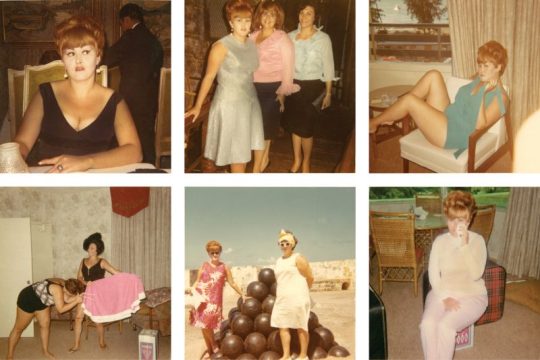
Photographer: Unknown
From Scrapbook Love Story: Memory and the Vernacular Photo
0 notes
Text
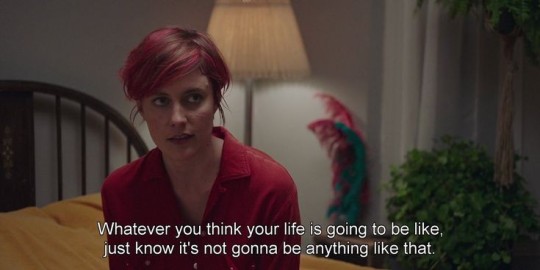

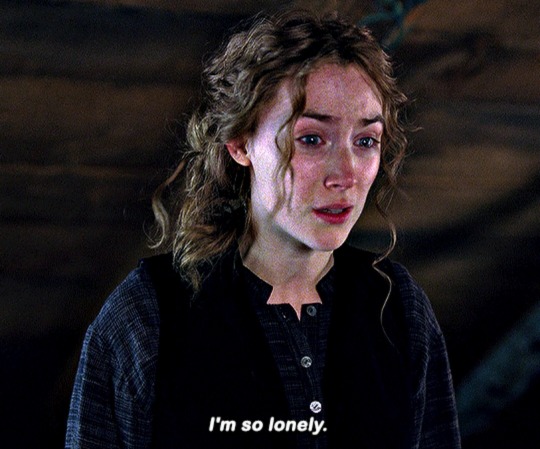






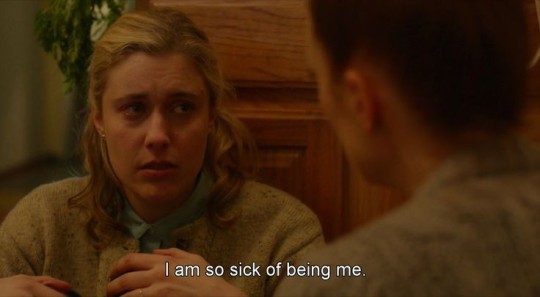
I'm just a woman from the Greta Gerwig universe.
Movies- 20th century women (2016), Frances Ha (2012), Little women (2019), Barbie (2023), Ladybird (2017), Mistress America (2015), Maggie's Plan (2015)
#barbie#barbie movie#greta gerwig#margot robbie#lady bird#saorsie ronan#little women#florence pugh#timothee chalamet#20th century women#mistress america#movie quotes#quotes#life quotes#quoteoftheday#film quotes#ryan gosling#current mood#moodboard#adhd mood#such a mood#bpd mood#frances ha#noah baumbach#mumblecore#comfort show#comfort movies#coming of age#coming of age movies#young people
1K notes
·
View notes
Text

Art Nouveau stained glass window from 1902 by Tiffany Studios, New York, USA.
📸 Driehaus Museum, Chicago.
#dark academia#light academia#academia aesthetic#classical#academia#escapism#classic literature#books#books and libraries#architecture#stained glass#art nouveau#tiffany#1900s#20th century#new york#america#object#window#royal core#cottage core#aesthetic#vintage#antique
1K notes
·
View notes
Text
Things People Seem to Forget About Steve Rogers (aka the past is complex)
Things in the future didn't happen in a vacuum, and while Steve missed a lot of stuff while he was in the ice, he would have seen the roots of things like the Civil Rights, Women's Rights and even LGBTQ+ Rights movements in his time.
While I'm sure Steve encountered a lot of people expecting certain right-wing behaviours from him, due to his birth year and the things he missed in the ice, this doesn't mean he would act that way—even right out of the ice.
But first lets take a look at the things Steve missed and see what he did in fact know:
The atom bomb. Steve never saw the atomic fallout, but what did he see? Hydra bombs literally being flown to his home city. There is also a possibility that as a specialty team, he learned about the German Nuclear Program during the war. His unit was tied to the Strategic Science Reserve, so I wouldn't be surprised if between that, and Hydra's bomb initiatives, Steve was well aware of the potential of a bomb threat. I doubt Steve has clearance to know about the Manhattan project, and I think he would be horrified to learn about the impact of the atom bomb on Japan (especially since he essentially thwarted the same thing from happening to New York) but majorly powerful bombs would not surprise him.
• The Cold War. Steve may not have experience the Cold War, but he grew up surrounded by the outcome of the First World War after the Communist take over of Russia. The debates surrounding Communism, Socialism, and Capitalism aren't new. Steve would have grown up with them and would probably be familiar with American pro-capitalist, anti-communist rhetoric. But would he agree?
Here's some things we know about Steve: He's an artist, he grew up during the Depression which was heavily mitigated by socialist measures, he grew up poor, he grew up disabled. As an artist Steve would be well aware of the debates between the political movements, and with his background, and the success of Roosevelt's New Deal reforms, it would not surprise me if Steve leaned more towards the Socialist side of the scale.
All this to say: Steve would not be unfamiliar with the tension between Russia and the USA. Especially since even though they were allies during the war, there were already concerns that the USSR wasn't so much 'liberating' the countries they drove Germany out of, as putting them under new management.
Steve would be familiar with the tensions underlying the Cold War, and his background might lead him to have a critical view of some of the pro-Capitalist propaganda that came out during the Cold War. While I don't think Steve would approve of Russia's methods and the ultimate outcome of Communism there, I don't think he would approve of the Red Scare Witch Hunt that happened in the States either.
• Civil Rights Movement. While Steve missed the major changes that occurred during the 50s and 60s, he would not be unfamiliar with movements for equality. Steve would also not be unaware of the inequality that minorities faced in his country.
For example:
National Association for the Advancement of Colored People (NAACP) was established in 1909 and is still run today. The NAACP fought and fights against discrimination and advocates for equality.
In the 30s President Roosevelt responded to "to charges that many blacks were the "last hired and first fired," [his administration] instituted changes that enabled people of all races to obtain needed job training and employment. These programs brought public works employment opportunities to African Americans, especially in the North" (Link)
"The first precedent-setting local and state level court cases to desegregate Mexican and African American schooling were decided during [the late 1930s]" (Link)
In 1941 thousands of Black Americans threatened to march on Washington for equal employments rights which pushed Roosevelt to issue an executive order that "opened national defense jobs and other government jobs to all Americans regardless of race, creed, color or national origin." (Link)
The Double Victory or Double V Campaign during the war was an explicit campaign to win the war against fascism in Europe and the war against racism as home.
All this to say, Steve would not be unfamiliar with many of the issues tackled during the Civil Rights Movement of the 50s and 60s.
Not only that, but Steve led a multi-racial special unit during the war during a time of active army segregation. Not only does he have a Black man on his team, but also a Japanese man. This would have most definitely led to backlash from higher command as well as discrimination from other units against Jones and Morita. Steve and the entire Howling Commandos would be explicitly aware of prejudice against two of their members and likely had to fight for them many times.
• Anything space travel. It's true Steve wouldn't know anything about attempts to reach the moon. But there were still several space discoveries he could know about, especially since he and Bucky are clearly interested in scientific discoveries, considering how they went to the Stark Exbo before Bucky shipped out.
Some discoveries:
Hubble's Law: In 1929 Hubble published evidence for an ever expanding universe, and thus provided evidence of the Big Bang theory.
1930: Discovery of Pluto (makes me chuckle to think this is a relatively new discovery for Steve and he wakes up to find it is a dwarf-planet now. You think Millennials are protective of Pluto? I think Steve would be too 😆.)
1937: "the first intimation that most matter in the universe is `dark matter'"
Personally I think Steve would be absolutely amazed by the advances in space travel.
• Women's Rights. Like with Civil Rights, while Steve may have missed the large movements during the 50s and 60s, he was around for the early movements. The 60s movement is called Second Wave Feminism for a reason. This is because there was already many pushes for women equality in Steve's time.
For example:
1920: White women win the right to vote. This means Steve's mother first voted in his lifetime. I feel this alone would make Steve heavily aware of inequality faced by women. (As a side note I feel that Sarah always emphasized voting to Steve since it was such a major development in her lifetime.)
Also in the 20s the Flapper trend rose, along with hemlines. Women's skirts were shorter and they smoked and drank with men. Middle-class and working-class women also worked outside of the home. The 1920s-1930s 'modern' woman is very different from the Victorian vision of a woman in petticoats and skirts.
Early Birth Control movement: Was "initiated by a public health nurse, Margaret Sanger, just as the suffrage drive was nearing its victory. The idea of woman’s right to control her own body, and especially to control her own reproduction and sexuality, added a visionary new dimension to the ideas of women’s emancipation. This movement not only endorsed educating women about existing birth control methods. It also spread the conviction that meaningful freedom for modern women meant they must be able to decide for themselves whether they would become mothers, and when."
1936: A Supreme Court decision declassified birth control information as obscene. Legalised doctor-prescribed contraceptives.
WW2 Watershed: Women serve in the army and work factory jobs. The government establishes universal childcare while women work.
Women also wore pants and form fitting clothes to work in factories. We also see Peggy wearing pants during the last assault on Hydra. While Steve may need to get used to modern fashion, he would already be familiar with the 'morale outrage' over women's clothes in his time, and probably try to manage his surprise in private as well as possible.
• LGBTQ+ Rights. Like with the rest of the equality movements, LGBTQ+ rights movements also started before the late 1900s.
1924: "Society for Human Rights is founded by Henry Gerber in Chicago. The society is the first gay rights organization as well as the oldest documented in America." This organisation was broken up soon after founding due to arrests, but it published "the first American publication for homosexuals, Friendship and Freedom."
In the 1920s and 30s "the gay and lesbian movement started taking shape. Social analysts began rejecting prior medical definitions of "inversion" or "homosexuality" as deviant.
Communities of men and women with same-sex affiliations began to grow in urban areas. Their right to gather in public places such as bars was tenuous, and police raids and harassment were common." (Link)
WW2 Watershed: While many LGBTQ people lived in rural areas or outside 'queer neighbourhoods' the war brought people from all backgrounds together. "As with most young soldiers, many had never left their homes before, and the war provided them an opportunity to find community, camaraderie, and, in some cases, first loves. These new friendships gave gay and lesbian GIs refuge from the hostility that surrounded them and allowed for a distinct subculture to develop within the military."
They still had to hide their identities for fear of persecution and a 'blue discharge', however "Gay and lesbian veterans of World War II became some of the first to fight military discrimination and blue discharges in the years following the war."
It's unclear how much Steve would have known about the gay and lesbian rights movement. But in the comics he has a gay friend Arnie Roth, and there are many meta posts (X X X) about how Steve may have lived in a queer neighbourhood.
And, according to my history professor, gay and lesbian soldiers were often protected by their friends in the army instead of outed. This is not to downplay the discrimination and pain outed veterans faced, but there was a comaraderie and understanding that developed between soldiers that protected many gay soldiers.
• Computer and the internet. The seeds of modern computers began during World War Two. Arguably it began earlier with Ada Lovelace. While technology has changed a lot for Steve, there is a long history of it's development.
Colossus Computer: Kept secret until the 70s, it's unclear if Steve's association with the SSR, Peggy (who was a code breaker before SSR) and Howard, would have led him to know anything about the "the world's first programmable, electronic, digital computer", but we see electric screens and machines being used in Captain America: The First Avenger. So he would know something of those mechanisms.
Also the first American TV was broadcasted in the 1939 World Fair, And since Steve and Bucky are already shown going to a science fair, I believe it is reasonable for Steve to know about the concept of television, though it looks much different in modern day.
• Rise of Neo-Nazis. Steve already saw the rise of fascism in his own country before the war, so while I think he would be horrified and saddened to learn of the Neo-Nazi movement, I don't think he would be surprised.
Because:
Eugenics: A large part of the Nazi campaign, this part of the movement originated and was inspired by the United States Eugenics movement. "It is important to appreciate that within the U.S. and European scientific communities these ideas were not fringe but widely held and taught in universities."
Lobotomies and institutionalisations were part of the treatments for disabled and 'weak-minded' individuals during Steve's time. With Sarah being a nurse it is likely Steve knew of these treatments and more. And as a disabled child of immigrants, I have no doubts Steve brushed up with eugenics beliefs many times.
1939: More than 20,000 people attended a Nazi rally in Madison Square while "[a]bout 100,000 anti-Nazi protesters gathered around the arena in protest".
In the comics Steve canonically has a Jewish friend, Arnie Roth. If he wasn't part of the protests against the Nazi rally, he would have heard about it and known about the rise of antisemitic sentiment in the US before the outbreak of the war.
So Where Does That Leave Us?
Steve has a history of anti-racist behaviour. While he would still have a lot to learn from the Civil Rights Movement and no doubt has unconscious biases he grew up with, he also explicitly builds a multi-racial team that would have led to clashes with systemic racism in the army. This would have inevitably led to him and the Howling Commandos taking an anti-racist stance in protection of their members.
Would Steve say the N-word? Likely not. The N-Word already held negative connotations by the 19th and early-20th century. I doubt Jones would be willing to follow a man who would knowing use the insult. 'Coloured' or 'Negro' were seen as the more acceptable terms. So Steve may use those words at first, instead of 'Black' or 'African-American'. 'Negro' is a controversial term for some Black Americans, so this would be something for him to learn, but he would not purposely by insulting or hurtful. And I believe he would adapt as quickly as possible upon learning.
Steve saw the early steps of many social movements. Given what we know about Steve—artist, disabled, immigrant, poor, raised by a single mom, gay and Jewish friend, potentially lived around queer people, worked with Peggy and smiled when she punched a sexiest, and built a multi-racial team—Steve would not only be aware of the social movements of his time, but he would be happy to learn of the developments after he went into the ice.
While it would take some time for him to learn all the changes that happened, Steve's background would led him to be pleased with the changes in society. This is the opposite of being racist, sexist, and homophobic. Some things might take some adjusting for Steve to get used to, but he is already open-minded and has a frame of reference for many of the social changes that happened.
People sometimes bring up Steve's Catholic upbringing to argue about some beliefs he might have. But while I do think this upbringing would lead to some biases, I think Steve's life experience helped counter, or helped him unlearn some of those biases, even before he hit the ice.
Also, as an Irish-Catholic, Steve would have faced some discrimination of his own. It is most certainly not on the same level as other minorities, and things were better in the 20th century. Being very clear, any discrimination Steve faced for being Irish-Catholic would not be systemic or commonplace like racism. But adding his heritage to the rest of Steve's background helps give us a better idea of why he was already open to social movements like the Civil Rights movement before the ice. And it may have made him already more understanding of LGBTQ+ people, who he may have lived around, even if he grew up being taught certain biases.
Other Things We Forget About Steve
He is quite tech-savvy. While Steve would have a lot to learn, we know he is capable. There are a lot of jokes about his technical know-how in Avengers, but I think he's actually managing very well considering it's probably only been a few weeks or months since he came out of the ice.
Examples:
Deleted scene where we see Steve using a laptop in his apartment. He presses the spacebar to pause a video, which is a keyboard shortcut. So not only can he set up a laptop to watch a video, but he already knows key shortcuts.
Deleted scene where waitress mentions 'wireless'. Steve is confused and thinks she means radio. But I think he actually knows about wi-fi at this point, but probably had never heard it referred to as 'wireless' before. By this point he knows radio is not as common, so his real confusion is why the waitress is offering him 'free radio'. If she had said free wi-fi (the more typical phrase in my opinion) I think he would have understood.
Canon scene of Steve helping Tony fix the Helicarrier engines. This is my favourite evidence because Tony asks Steve to look at the relays and Steve makes a quip that they 'seem to run on some sort of electricity' indicating he is out of his depth. But we never see Tony tell Steve what to do. Steve figures out how to fix the relays himself. Tony is busy with the debris in the rotors and the next thing we see is Steve telling Tony the relays are all good.
Steve is much better at adapting and figuring out technology than we give him credit for. This doesn't mean he won't be anxious or uncomfortable with the sheer amount of stuff he has to learn (especially if everyone keeps making jokes about it to him). But by 2014, it's clear he's already mastered all of it, which is amazing when you think about it, because that's only two years of learning.
Steve is very book smart. In the comics Steve goes to art college, implying he finished high school. Even if he did drop out of high school to work, we know Steve is very smart.
We see him unloading a whole suitcase of books in the barracks before he got the serum.
The mental math is must take to throw the shield at the right angles for it to bounce back is insane.
Steve is also known as a master tactician. So it is clear he has the brains and smarts to run his team during the war. Not only that, but he is not just Captain in name. He actually has that rank, which means he passed the Captain's exam. I also have a feeling he would have needed to pass some kind of evaluation to get the serum in the first place.
We see in Steve's 2014 apartment that his bookshelves are full of history books. Steve is a veracious reader and spends a lot of his time catching up on what he missed. Things he didn't learn or were taught differently growing up would definitely exist, but Steve is actively working to counter that.
Steve would swear. Swearing has been a constant throughout all of history. So too, the backlash against profanity. Even if Steve grew up being told not to swear he would have heard it. And, Steve became a soldier. If he didn't swear before the war, he most definitely picked up some of it then.
I think Captain America isn't supposed to swear, and I think Steve would be aware of this perception of the symbol of him. But I think when Steve is comfortable with people, he would swear. We see in Avengers he doesn't swear, but in Avengers: Age of Ultron, he does.
We joke about Steve and the "Language" line, but I think that line has something to do with Steve's history of being perceived as a symbol and as Captain America since he said it 'just slipped out'. So, while Steve may have been encouraged not to swear growing up, and expected not to swear as Captain America, I fully believe that soldier, veteran, and Irish man Steve Rogers does swear.
Wrap up
I hope you liked this deep dive into Steve's history and character.
I think it can be easy to take the past as a lump sum and view everyone in the past through one lens. We know the past was racist, sexist, and homophobic, so we view everyone from the past that way.
And while it's true things were different back then, people were most definitely fighting for change and aware of the issues. There is also a lot of nuance to the past, and a lot that can be gleaned from what we know about Steve.
It's true that Steve would have a lot to learn when it comes to terminology and specific technology, but I believe Steve's background would prepare him for a lot of the social changes that happened after he went into the ice.
#steve rogers#meta#deep dive#long post#captain america#historically accurate#research#sources cited#early 20th century#20th century history#20th century#social movements#marvel#mcu#please don't tag the other post#no drama please#iykyk#historically accurate steve rogers
93 notes
·
View notes
Text

Calavera Oaxaqueña, José Guadalupe Posada, 1910
#Day of the Dead#Dia de los Muertos#art#art history#José Guadalupe Posada#woodcut#print#calavera#Mexico#Mexican art#Latin America#Latin American art#20th century art#Library of Congress
185 notes
·
View notes
Text
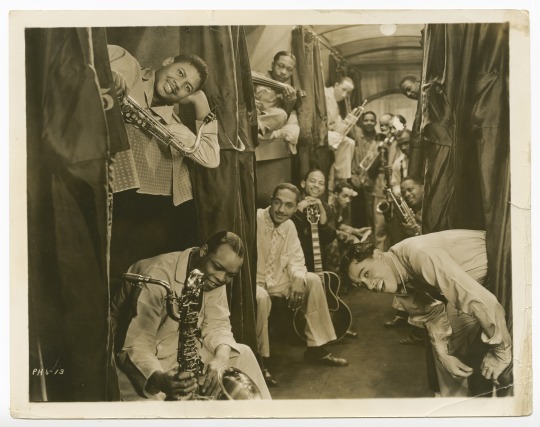
Cab Calloway and his band in a sleeper car, 1933
#Cab Calloway#musicians#photographs#jazz history#1930s#20th century#great depression#gelatin silver prints#american#north america#Harlem renaissance
131 notes
·
View notes
Text

Gerry Beckley and Dan Peek of folk-rock group, America. Photo 1972 by Henry Diltz.
#retro#1970s#pop#music#70s#rock#folk#musicians#america#gerry beckley#singer#dan peek#dewey bunnell#snakes#folk rock#long hair#20th century#culture#pop music#henry diltz#📸
81 notes
·
View notes
Photo

American-made sparkler brands 1910-1950
#4th of July#vintage#sparklers#fireworks#fourth#Leader#UnXld#Atomic#Star brand#20th century#America#USA
1K notes
·
View notes
Text




Ann Lowe (American, 1898-1981). American Beauty dress, 1966-1967. Silk, tulle, linen, metal, and elastic. Washington, D.C.: Smithsonian National Museum of African American History and Culture
29 notes
·
View notes
Text
Captain Underpants Animation Test
#captain underpants#animation#animatic#storyboard#storyboards#test#animation test#test animation#2d#english#3d#dav pilkey#united states of america#unites states#north america#2017#2010s#dreamworks animation#dreamworks#20th century fox#20th century
62 notes
·
View notes
Text
you didn't hear it from me, but jacob anderson created a new spotify playlist titled EUROPE and has been adding songs to it for the last month 👀
we already know that he uses music to get into Louis' mindset in his trailer during filming (he shared the LDPDL playlist a while back with this explanation) so one can only assume that things are brewing...
#jacob anderson#interview with the vampire#not to sound crazy#but this hiatus has been driving me crazy and i'm searching for CRUMBS#HE'S GOT JOSEPHINE BAKER ON THIS PLAYLIST. you know.. famous 20th century african american icon who left america for paris!!!#was active in paris from 1925 until she died in 1975. yall. is the math adding up or am i just going feral in my cage by myself??#my best guess is he's getting first drafts of the script rn#all my mutuals are asleep so i'm shouting into the void but idc idc
254 notes
·
View notes
Text

Photographer: unknown
From Scrapbook Love Story...
0 notes
Text
does anyone know anything abt interracial marriage/relationships between 2 ppl of different races who weren’t white in the US the early-mid 20th century bcz googles fucking useless
#specifically the legality of it#all the stuff i can find is abt white ppl marrying poc not anything abt if a middle eastern person could marry an east asian person or what#for context i’m writing a fic nd wanna know if id be able to make this character (who was 20 in the 50s) mixed and have her parents be#married#also wanna know if id have to make the guy she’s into/the girl he’s into the same race as her for the story to work#20th century america stop being so racist it’s making my job very hard#ryan shut the fuck up
21 notes
·
View notes
Text

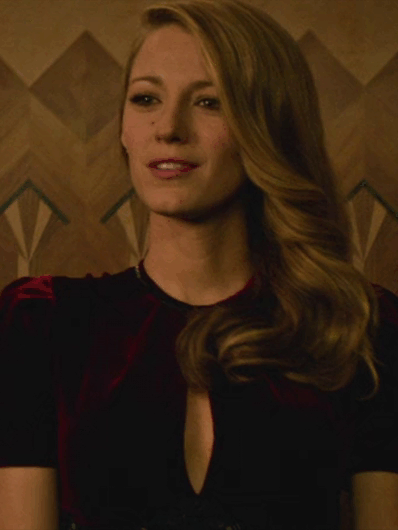





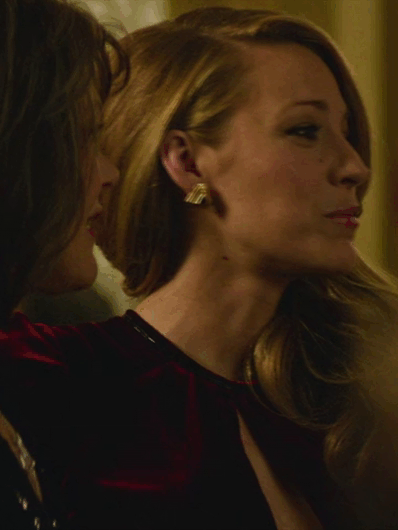

The Age of Adaline + Costumes
Adaline Bowman's red & black dress.
// requested by anonymous
#The Age of Adaline#Adaline Bowman#period drama#perioddramaedit#costume drama#costumes#costumesource#1940s#1900s#2010s#2000s#20th century#21st century#red#black#San Francisco#California#USA#North America#requests
84 notes
·
View notes
Text
Sunday Steve - Day One
Things that would be new or unfamiliar to Steve in the 21st century, either due to the time period he grew up in, or his social-economic status and other such factors.
Day One: Ball Point Pen
The history of the ball point pen is actually really interesting and I spent a lot of time digging through articles trying to decide if Steve would have used them.
See, ball point pens were technically invented right before World War Two (there's a complicated history of just who invented it first, but the one that caught on and began to be used in the states was invented by a Jewish refugee in the 1938s.)
László Bíró was able to get a contract with the British RAF to supply ball point pens to pilots. These pens worked better in cramped spaces and at high altitudes than fountain pens.
But outside of military use, the ball point pen did not catch on in America until the The Reynolds Rocket first sold for 12.50 each ($214 in today's money).
It may be possible that Steve had encountered a ball point pen before, given that Howard is an inventor and a pilot, he could have learned of them through him.
But there is a very high chance that Steve never used a ballpoint pen before going into the ice, and he may have never even seen one before. (As for retractable 'clicky' pens? Not invented till the 50s.)
Sunday Steve Masterpost
#just blows my mind steve very well might not have known something as basic as a ball point pen#history#meta#steve rogers#steve rogers meta#ball point pen#pen#sunday steve#facts#fun facts#random facts#captain america#21st century#20th century#mcu#marvel#inventions#ballpointpen#ballpoint pen
67 notes
·
View notes